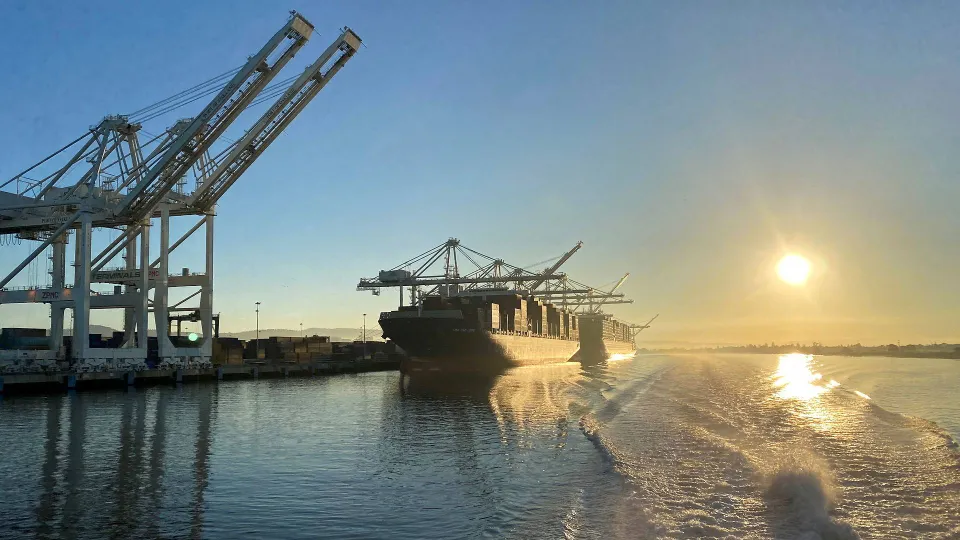The EU Parliament has given its approval to the part of the EU’s large-scale energy reform that aims to include shipping in CO2 quota system from the new year. Siglar Carbon has calculated the additional charges for a single container from Rotterdam to Shanghai.
When carriers from the turn of the year have to register how much CO2 a single vessel emits between two ports – and pay for it – it will probably make customers choose the least pollutive as this may also be the cheapest.
And basically, this is also the aim with the EU Commission’s inclusion of shipping into the Emissions Trading System (ETS), in which companies have to buy CO2 quotas based on the amount of their carbon emissions.
Norwegian consultancy firm Siglar Carbon has shared a calculation with WPO for the price increase for a single container transported between Asia and Europe.
The calculation focuses on the world’s busiest container route, Rotterdam-Shanghai, where ships at work have a capacity of more than 10,000 teu. In Siglar Carbon’s example, the basis is a vessel able to carry 14,000 containers, however, with 10,000 on board.
Furthermore, these are the calculation’s premises:
Siglar Carbon’s calculations show that the container vessel emits roughly 10,000 tonnes CO2 on a voyage from Rotterdam to Shanghai, which, according to the firm, means an additional charge of USD 50 per container. It is from this premise that the price per tonne CO2 lands at USD 100.
But if the final regulation includes the compromise just passed by the EU Parliament in which the entire voyage outside the EU has to be part of the carbon accounts from 2027 and not just half as the EU Commission has suggested, then the price may become twice as high.
Must apply to all international traffic
The EU has not yet finished negotiations on the quota system, which the EU Commission presented in July last year as part of the major Fit for 55 energy package.
Another important part from a maritime perspective is FuelEU Maritime, which will define what counts as green fuels, and which fuels the EU believes to be the future.
But the EU Parliament has recently given its support to large parts of ETS, including the basic idea that companies have to buy quotas based on their carbon emissions. In relation to this, the EU Parliament’s Committee on Environment, Public Health and Food Safety (ENVI) made adjustments to some of the elements in the proposal.
Besides including 100% of international voyages, this means that smaller ships down to 400 GT are made part of the ETS system as well. So far, vessels at a size of 5,000 GT have been the minimum.
From an operational perspective, we believe that the carriers that are able to deliver well-documented reductions, preferably down to every single transported container, will be the winners
Siglar carbon
Furthermore, the EU Parliament wants the regulation to cover pollution from all relevant greenhouse gases. Thus, not only CO2, but also methane (CH4) and N2O.
The question is whether the price will make customers choose certain carriers.
”From a customer perspective, we believe that the most important effect from ETS is not the extra cost itself, since variation among operators is probably too small to make a difference. But from an operational perspective, we believe that the carriers that are able to deliver well-documented reductions, preferably down to every single transported container, will be the winners,” reads a comment by Siglar Carbon to WPO.
”Of all shipping markets, container is the one closest to end users, but today, end users have limited access to emissions data that support their buying decisions,” the consultancy firm continues.
In the end, it will be the Council of Ministers, meaning the ministers of the EU member states, that will have to pass the CO2 quota regulation.





